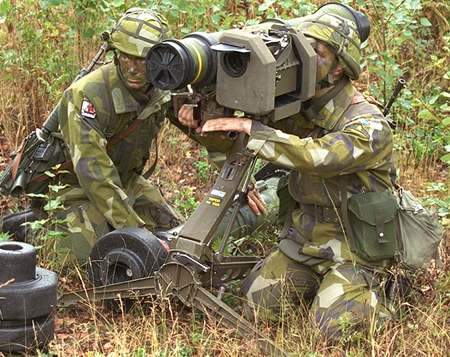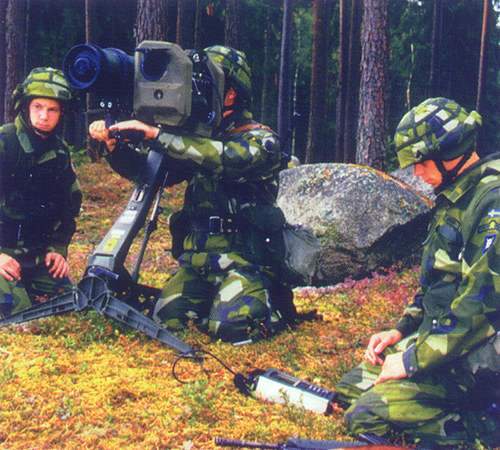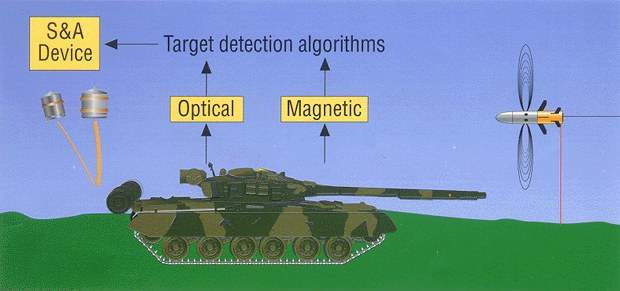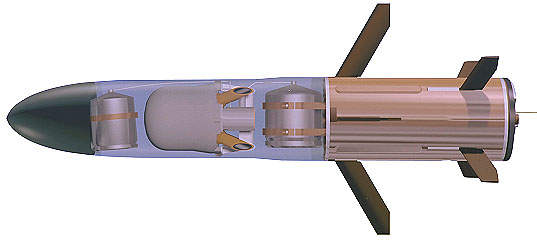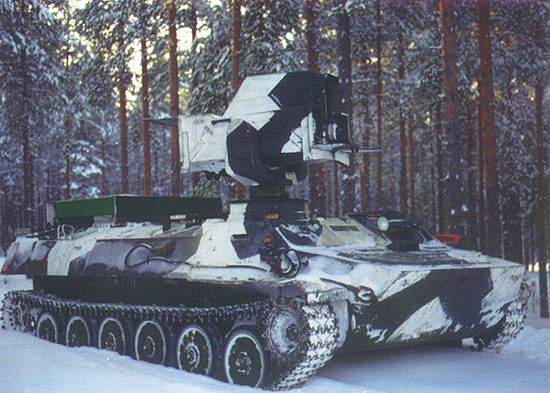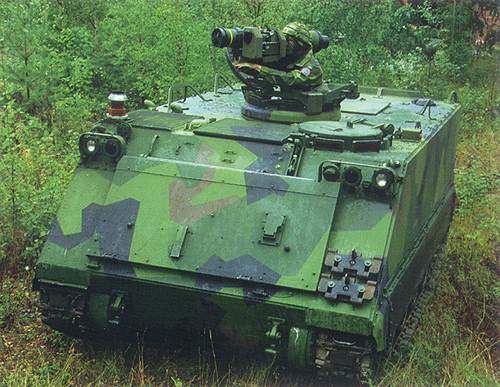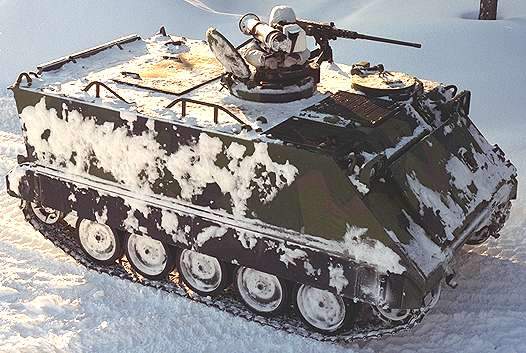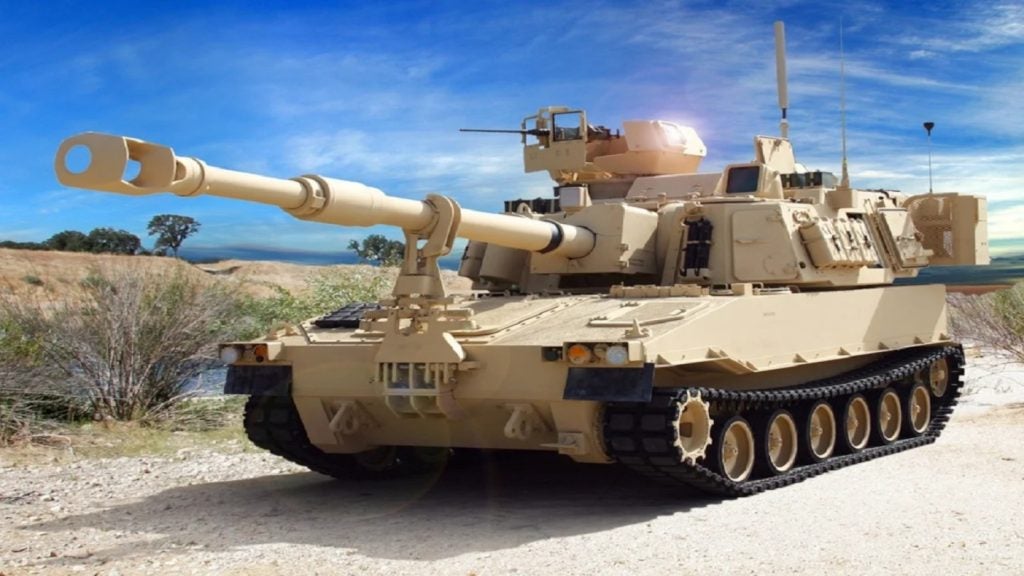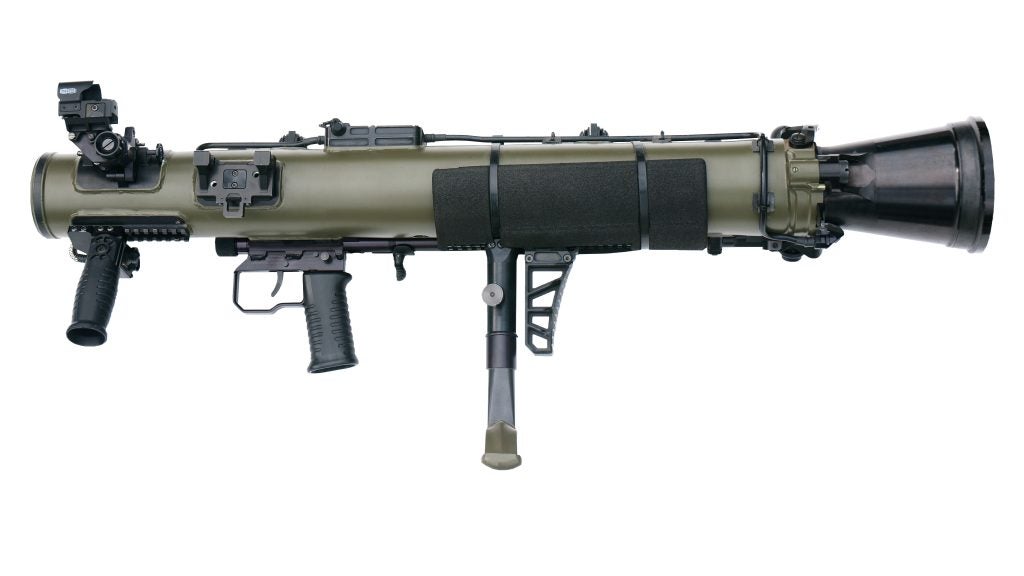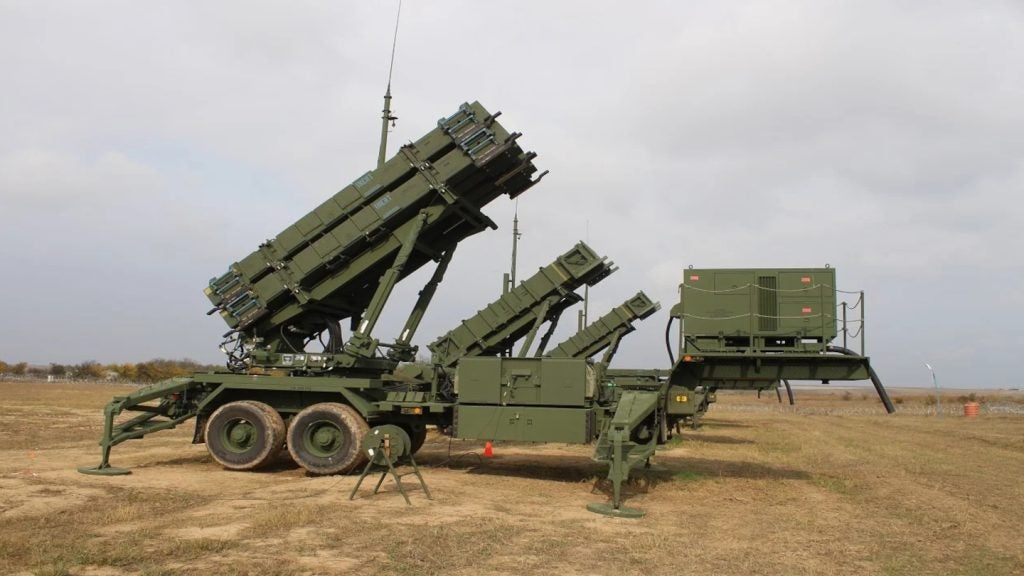
The BILL 2 anti-tank guided missile system
The BILL 2 multi-mission guided weapon is a further development of the successful BILL I (RBS56), which has been in service with the Swedish Army since 1988, and is also in service with the Austrian and Brazilian Armies. BILL 2 is manufactured by Saab Bofors Dynamics, who are based in Karlskoga, Sweden. BILL 2 is also in service with the Swedish Army.
In December 2007, Saab announced it had received an export order for the Bill 2 missile. No further details were given.
Because of technological advances in fighting vehicle armour including ERA (Explosive Reactive Armour), Bofors have improved the Overfly Top Attack (OTA) technology for BILL 2 and introduced a new double warhead. BILL 2 also incorporates improved guidance accuracy via the rate gyro, which monitors the gunner’s tracking movements.
The missile’s primary role is to attack armoured targets at the weakest point, using the overfly top attack trajectory. However, due to the three firing modes, it can also engage and destroy hovering helicopters, non-armoured targets and soft targets, such as machine gun nests.
The portable missile system consists of the 10.5kg missile, launch tube, tripod, 7x magnification day sight and 1x thermal imaging sight.
BILL 2 missile system
The BILL 2 missile system has a SACLOS (Semi-Automatic Command to Line-Of-Sight) guidance system and the missile is wire-guided. The user maintains the target on the boresight of the thermal imaging or day sight, and the missile trajectory is monitored from a laser beacon in the rear of the missile.
Predictive tracking algorithms are used to maintain the missile trajectory at the correct offset for the chosen engagement: 1.05m above the line of sight for armoured and soft target attack and along the boresight for non-armoured attack. Guidance signals are sent to the missile via the trailing wire.
The warhead contains both an optical and a magnetic sensor. The optical (laser) sensor functions as a rangefinder, measuring the height of the target beneath the missile and profiling the target simultaneously. The magnetic sensor measures metallic signatures and algorithms recognise the turret or centre of the target and determine the optimum position for the warheads to detonate. The missile has an inertial impact fuze for direct attack as well as a proximity fuse.
The missile has a double vertically striking shaped charge High-Explosive (HE) warhead. The two shaped charge jets are compensated to direct all the fragments of the jets downwards onto the same spot on the surface of the target. First, the front warhead destroys the reactive armour and then the rear warhead has free passage to penetrate the main body armour of the tank.
The missile system is effective against both static and moving targets with an effective range of 150m to 2,200m. Flight time at maximum range is 13 seconds.
BILL 2 missile firing modes
Prior to missile launch, the gunner can select any of the following three firing modes.
Basic mode: the missile flies about 1.05m above the line of sight and hits the target from above. All sensors (magnetic and optical) are activated and the algorithms are optimised for a defined threat.
Non-armoured target mode: the missile flies along the line of sight. All sensors are disconnected. The impact fuse is selected.
Soft target mode: the missile flies on the same elevated flight path as in basic mode. The optical sensor is activated, the magnetic sensor deactivated. Special algorithms are used for warhead initiation. This mode can be adapted to suit customer requirements.
Vehcile mounted anti-tank missile system
BILL 2 can be mounted on a wide variety of wheeled or tracked fighting vehicles. In 2000, the Swedish Defence Materiel Administration (FMV) awarded a contract to Saab Bofors to produce a technology demonstrator integrating BILL 2 into the turret of the Bofors Defence CV 9040 combat vehicle.
The missile system can also be mounted under armour in which three missiles, along with the daysight and thermal imager are mounted on the weapon platform. The missile can then be fired via a remote control unit, by the gunner inside the vehicle. The missile and sights can be dismounted and used with the tripod if necessary.

